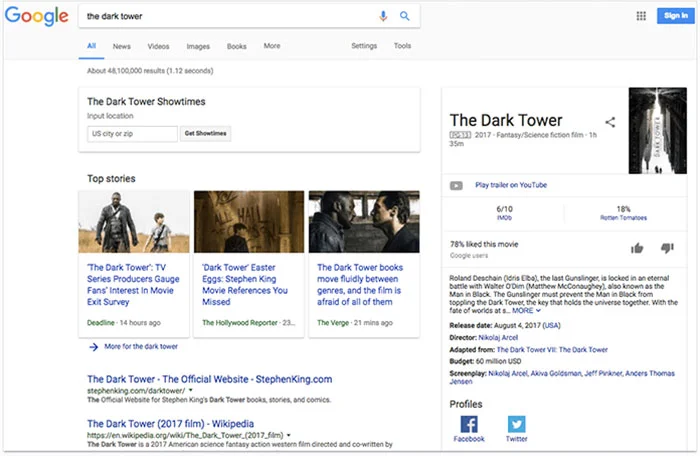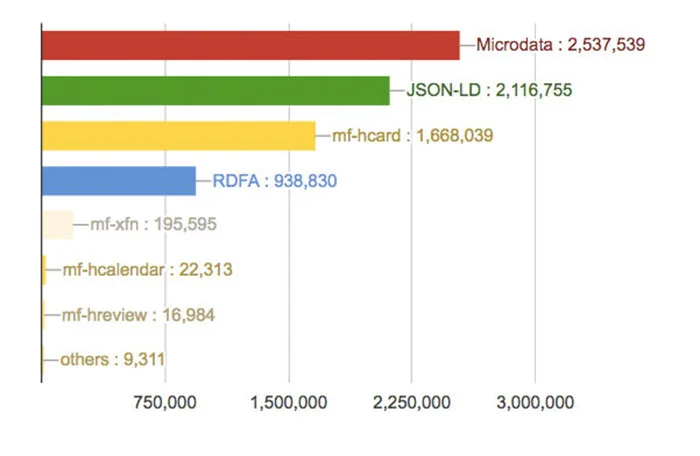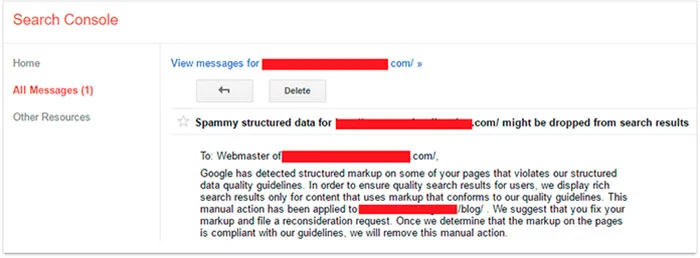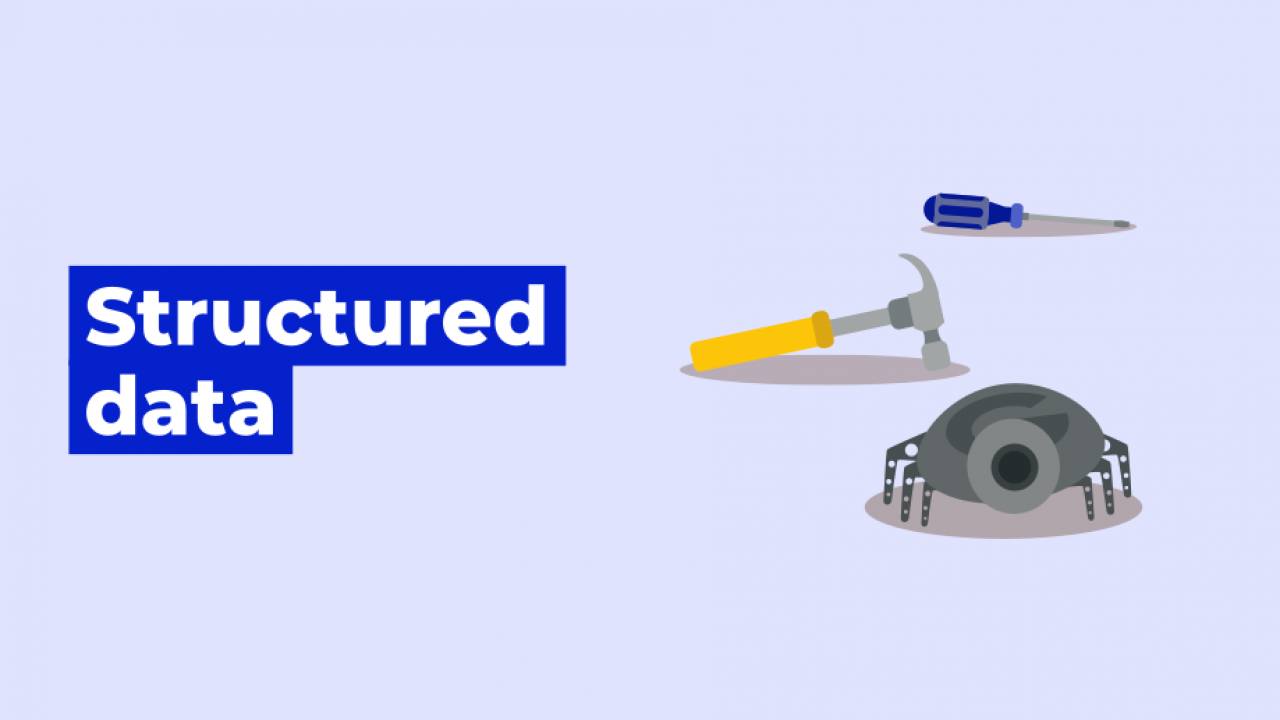What Is Structured Data? and How Does it Impact SEO?
What is Data structure and semantic web?
The Semantic Web has existed since 1988. But what does it mean?
Semantics is the science of studying meaning in language, which examines the relationship between words and phrases and what they symbolize; Therefore, a semantic web is a meaningful internet; Therefore, the semantic web is not related to keywords and backlinks, but the first thing in the semantic web is the relationship between concepts; That is, instead of the word and phrase itself being important, the concept behind it and its themes are important.
according to the introduction we gave at the beginning of this article, search engine robots are not capable of understanding meaning as much as humans, so the semantic web has its own range of vocabulary and grammar. Using the vocabulary and grammar of the Semantic Web, you can write logically based phrases and sentences that search engine bots can analyze and understand.
Why use Data structure?
Over the years, search engine results pages (we’re talking about Google, of course) have a boring list of blue links:

It’s turned into fairly well-organized pages full of useful information. You may be able to find your answer from the information on the same search page without having to click on the results link.

We call the various cards and widgets you see above “search feature”, which generally has two types:
- Content features that appear as separate results; For example, direct answers to questions, information panels, or news bars;
- Search results extensions are part of different parts of search results (snippets); For example, the score of each article is marked with a star symbol.
Search features occupy a relatively large volume of the results page and, in addition, have a higher click-through rate. According to our observations, even features with add-ons (such as rating stars) are almost 30% more click-through compared to those without add-ons. If your website is not among these sections, you are missing out on great opportunities.
In addition, data structure improves the user experience. If there is structured data, users can transfer it to different programs and websites. For example, the user can enter the date of the event directly or with one click into his system’s calendar software, book a movie or concert ticket without leaving the search results page, or find the phone number of the nearest restaurant.
Features are part of the semantic web and are formed based on a data structure that Google can understand and interpret. Therefore, Google can only enable these features for your site in its search results if it can understand the content of the site. For this purpose, you should put the additional information necessary for Google through structured data in the codes of your website pages.
Okay, hopefully, we’ve convinced you that data structure markup is no longer an option but a necessity. Now, we will discuss the technical aspects of data structure.
Schema.org, Microdata, Microformat or DRFa?
Not all experts agree on the best way to mark up data structures (that is, how to mark up data structures); Therefore, many and confusing terms such as RDF, RDFa, Microformats, Microdata, Schema, and other similar things have emerged. Here we try to explain these things in simple language and see which one is the best option for SEO.
If you’re looking to communicate information (either naturally or through machine language) you’ll need two things:
• Vocabulary: a set of words that communicate between signs and meaning and;
• Grammar: a set of rules that determine how words can be used to convey meaning.
Here is an example of the vocabulary defined for data structure markup, which consists of five entries:
• Person: A person (living, dead or imaginary). A person can be defined by the following characteristics:
• familyName: Person’s last name;
• givenName: Person’s nickname or first name;
• gender: Gender of Person;
• birthdate: Person’s birth date.
In addition to these words, we need several grammatical rules so that the computer program can understand and store information according to them.
Data structure vocabulary:
• Schema.org
• DCMI
• FOAF
• Microformats
Data structure grammar:
• Microdata
• JSON-LD
• RDFa
• Microformats
Note: Microformats define both the grammar of the data structure for its placement in HTML pages and the necessary vocabulary. For this reason, we have mentioned them in both vocabulary and grammar sections. The disadvantage of this format is that you can only use it if the appropriate vocabulary is already defined in the Microformat format. But by using RDFa, Microdata and JSON-LD, you can use any words you want and even create your own new words.
What vocabulary and grammar to use for data structure?
If you are going to choose one of the above options for vocabulary, our suggestion would be Schema.org. Popular search engines like Google, Yahoo, Bing, and Yandex support it. It has a good and comprehensive guide, and its development team is active.
But we cannot give you a short answer about grammar. Currently, you have three main options: RDFa (Resource Description Framework in Attributes), Microdata, and JSON-LD (JavaScript Object Notation for Linking Data or JSON for Linking Data). The concepts of RDFa and Microdata are very similar, and both allow the reuse of HTML data.
In the RDFa method (the code below this paragraph), “startDate”, “endDate” and other marking values are visible to the user and do not contain duplication or repetition of information:
San Francisco 49ers
Joe Montana
1979
1992
On the other hand, JSON-LD replicates the data and as a
Perhaps such a difference is not visible, but from the point of view of a digital marketer or SEO expert, it is an influential and important factor.
Overall, the available statistics (see chart below) show that Microdata is the most widely used method, followed by JSON-LD, and we see an upward trend. Currently, Google suggests using JSON-LD; however, search engines can also recognize Microdata and RDFa.
Overall, our general recommendation is that a combination of Schema.org and JSON-LD will be suitable for the vast majority of websites.

First step: Select the appropriate schemas
Check out the different schemas available on Schema.org. The following are among the most widely used schemas:
Organization
• Person
• Place
• Local Business
• Restaurant
• Product
• Offer
• Review
• Creative Work (innovative and artistic activities)
• Book
Movie
• Event
Second step: Mark the data structure
Thanks to Google, you don’t need complex coding to mark up data structures on your website; Rather, you can easily use an easy-to-use tool called Structured Data Markup Helper, which will accompany you throughout the markup process. To use this practical and useful tool, follow the steps below:
1. Open Structured Data Markup Helper; Choose a suitable schema and enter an address from the table you prepared in the previous step. Then click the Start Tagging button.

2. Highlight the desired component or section and choose the appropriate schema from the menu that appears. If you can’t find the titles you want in the right sidebar, you can add them using the Add Missing tags button. After finishing the work, click on the red Create HTML button.
Step 3: Test the markup
Open the Structured Data Testing Tool in your browser and enter the address of the desired page. This tool displays all the bookmarked information along with the necessary errors and warnings.

Now you have to sit and wait. Naturally, it will not be possible to display the content of your website in the features and rich snippets of the search results pages (links that contain additional information such as rating stars) until Google reviews the website again. Also, keep in mind that even if you have bookmarked the data structure everything went well and the data structure test tool shows no problems, no one can display your data structure in Guarantee search results. Among the most important reasons for not displaying the data structure in the features and rich snippets of the search results pages, the following can be mentioned:
• The data structure does not match the main content of the page or the potential for fraud has been detected in it;
• The data structure has flaws that the test tool was not able to identify;
• Bookmarked content is hidden from the user’s view.
Note that you should not try to trick Google in any way; Because you will almost certainly be fined for improper use of data structures. In some cases, instead of automatic actions, the responsibility of handling your website problem is left to Google employees. Usually, the content of the message sent to the offending website is something like this:
“It seems that in the marking of some pages of this website, techniques such as marking content that is hidden from the user’s view; flagging irrelevant or misleading content; and/or other deceptive behavior that violates Google’s quality guidelines for rich snippets have been used.”
or something like this:

Step 4: Identify problems using Google Webmaster Tools.
According to Murphy’s Law, if there is an opportunity to go wrong, it will happen. Therefore, you should be careful to minimize the possibility of mistakes and quickly identify and fix existing problems. In this regard, you should consider data structure review as part of your daily SEO plans.
Fortunately, Google does not leave you alone here with its search console or Webmaster Tools. It is enough to enter the Google search console (Google Webmaster Tools). Then, from the Search Appearance section, select Structured Data. This tool not only shows you the details of the possible errors but also provides you with the details of the different types of data structures detected on your website.

Conclusion
Now, you have all the necessary information and tools to prepare your website for the Semantic Web. The web’s importance requires that you get to work and convert the information from different sections and pages of your website into a data structure. We will be with you on this path, and you can count on our help.

